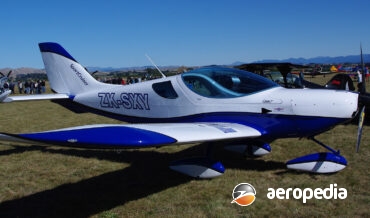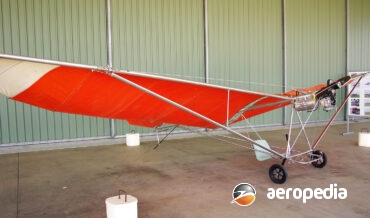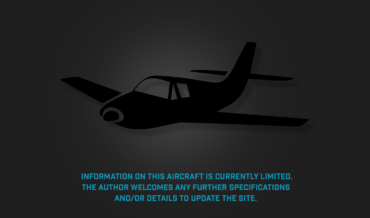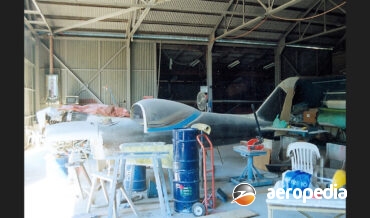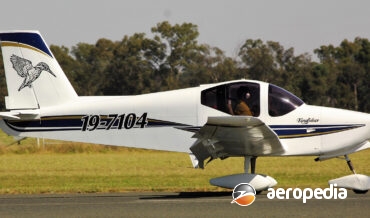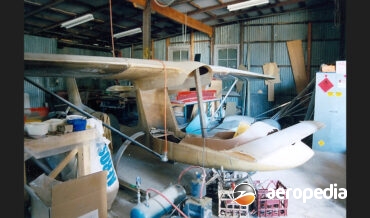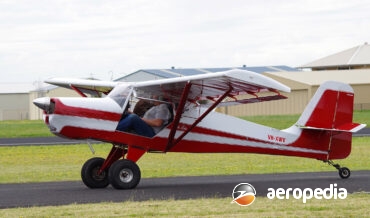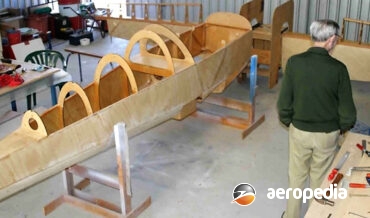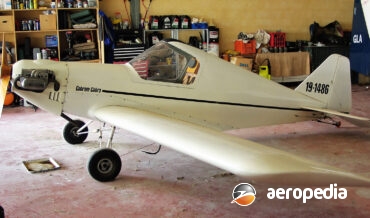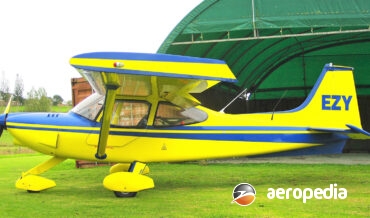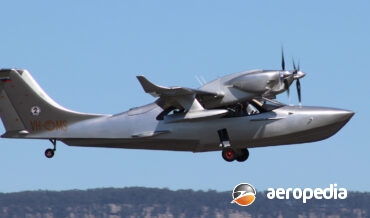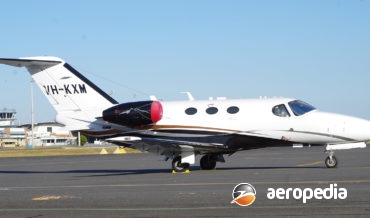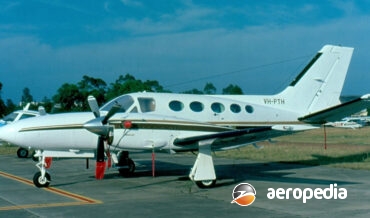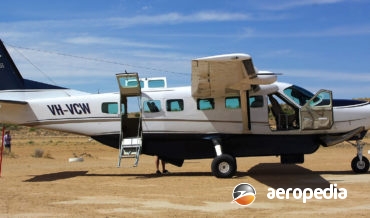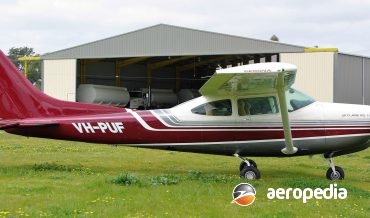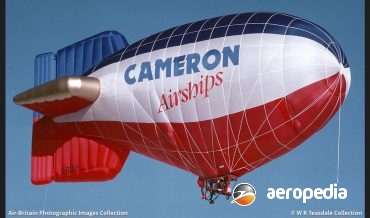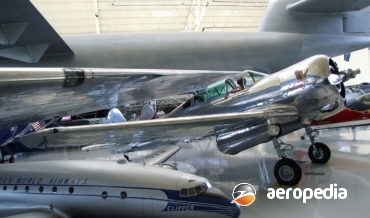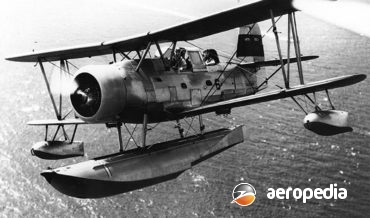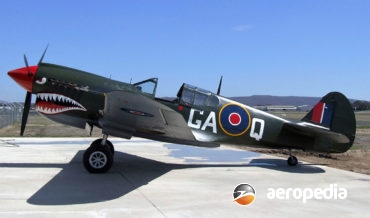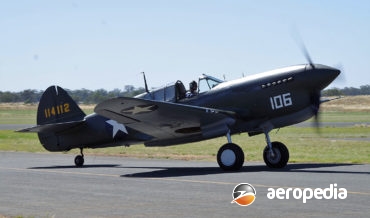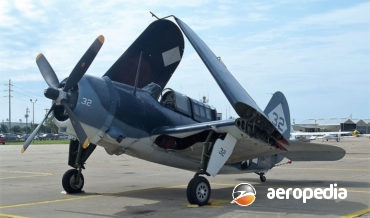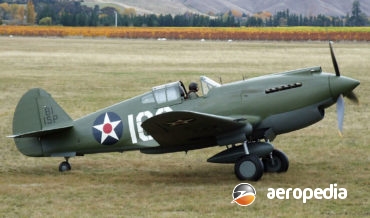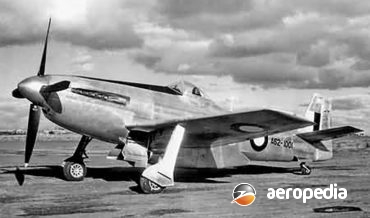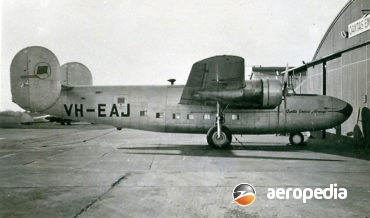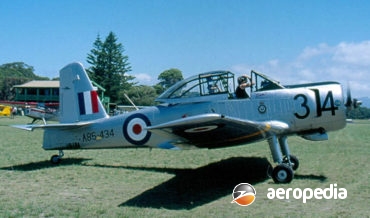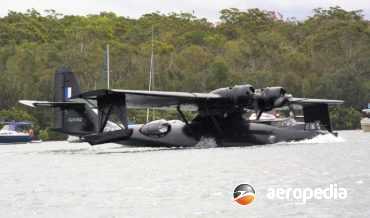All Contents
Contents
The SportsCruiser was designed in the Czech Republic as an all-metal low-wing, low maintenance aircraft and is built at the CZAW facility.
David C. Eyre
- June 26, 2020
The Wasp was a single-seat light aircraft designed in 1978 by Neville White. It was an open cockpit, aircraft, with a Fuji Robin 250-cc engine, a single-cycle unit with a belt drive.
David C. Eyre
- May 25, 2020
Very little is known about this aircraft. It was placed on the RAA register on 27 January 2005 as 19-4255 (c/n CAA-001) and removed on 27 January 2006.
David C. Eyre
- May 25, 2020
This was an ultralight aircraft designed and built by Mr Alan Clarke. It was powered by a Fuji Robin 250 engine and had an empty weight of 84 kg (186 lb).
David C. Eyre
- May 25, 2020
Designed and built by Mr Raymond Tolhurst of Composite Aero Components of Camden, NSW, the White Pointer was one of a series of high-performance light sporting aircraft designed by this company aimed at the sport aviation fraternity.
David C. Eyre
- May 25, 2020
The Kingfisher is a one off two-seat low-wing cabin monoplane designed and built by Mr Clark. This aircraft is powered by a 90-kw (120-hp) Jabiru 3300 six-cylinder engine and was first registered as 19-7104 on 24 March 2009.
David C. Eyre
- May 25, 2020
This aircraft was designed by Mr Raymond Tolhurst as an all-composite light sporting aircraft for his Company Composite Aero Components of Camden NSW.
David C. Eyre
- May 25, 2020
The Cielo Lobo is a light sporting aircraft built by amateur builders. Work commenced on the construction of the first Australian aircraft in 2002 and it was eventually completed and registered with the RAA on 21 July 2010 as 19-7577.
David C. Eyre
- May 25, 2020
The Colby is a single-seat ultralight aircraft built by Mr Colin Thorpe and is basically a Flightstar modified by the builders to meet their needs.
David C. Eyre
- May 25, 2020
In Queensland early in about 2000 an amateur constructor designed and built a scale replica of a twin-engine, push/pull, Cessna 337.
David C. Eyre
- May 25, 2020
The Imp is a light aircraft of all wood construction with fabric covering designed and built by Murray Cohoe at Serpentine in Western Australia. It was nearing completion late in 2007.
David C. Eyre
- May 25, 2020
This aircraft was a glider imported from the United States where it had operated as N642BA (c/n 101A-0187) It was first registered in Australia as VH-BII on 5 March 2008.
David C. Eyre
- May 25, 2020
As noted elsewhere, Steven Cohen came from a background of hang gliding and was a successful manufacturer of hang gliders.
David C. Eyre
- May 25, 2020
This aircraft was a homebuilt Vans RV-4 quick-build kit constructed by Carl Wright of Ventura, California and was registered in the United States as N67CW.
David C. Eyre
- May 25, 2020
Steven Cohen, along with Colin Winton, is recognised as one of the most prolific designers of Ultralight Aircraft in Australia.
David C. Eyre
- May 25, 2020
In about 1935 Keith Cameron built a small single-seat monoplane. It was of wood construction with fabric covering. It was not thought to be intended to fly and was only used for taxiing training duties.
David C. Eyre
- May 25, 2020
This aircraft was designed by prolific aircraft designer in Australia, Steven Cohen, in 1983. It is an extremely simple aircraft and, other than for the tail it was all straight tube and plate.
David C. Eyre
- May 25, 2020
This is an amphibian designed and built by prolific designer and builder, Steven Cohen, at Wedderburn, NSW, with work commencing in 2018 and continuing into 2019.
David C. Eyre
- May 25, 2020
This was an aircraft built in Adelaide in about March 1915. It was fitted with a 19-kw (25-hp) Anzani engine installed in a pusher configuration.
David C. Eyre
- May 25, 2020
The Cobra was a one-off single-seat light sporting aircraft fitted with a four-cylinder engine with a fixed tailwheel undercarriage and registered with the RAA on 4 April 2002.
David C. Eyre
- May 25, 2020
This was an ultra-light aircraft designed, built and flown by Christopher Conroy, who later designed the Sparrow and Sparrowhawk range of light aircraft.
David C. Eyre
- May 25, 2020
The Cli-Mate commenced life as a Foxcon Terrier 200 but received some major changes during its construction. It initially became ZK-EZY² (c/n NZ2006) and was registered on 21 July 2004 to the Paul Hopper and Rex Swenson Partnership.
David C. Eyre
- May 25, 2020
This was an all-composite light aircraft designed by Scott Taylor and Robert Herring of Custom Aircraft at Mildura.
David C. Eyre
- May 25, 2020
This was a light touring biplane which was registered with the RAA as 19-4105 and appeared on the register from 28 April 2004 to 28 April 2005.
David C. Eyre
- May 25, 2020
The SeaBear was designed by G Annenkov and a team of graduates from the Samara State Aerospace University in Russia and more than 30 examples have been delivered.
David C. Eyre
- March 23, 2020
On 8 September 2006 the Cessna Aircraft Company was granted a type certificate for the Citation Mustang, the Model 510, making it the world’s first fully-certified, new-generation entry level business jet.
David C. Eyre
- March 23, 2020
In 1980 the Cessna 425 Corsair was introduced to the Cessna range. Based on the airframe of the Model 421 Golden Eagle, the Corsair was fitted with Pratt & Whitney PT6A turboprops.
David C. Eyre
- March 23, 2020
Following the success of the 208 and 208A, Cessna decided to extend the fuselage to permit a greater payload.
David C. Eyre
- March 23, 2020
Following the production of almost 17,000 Cessna 182 Skylanes, Cessna in 1977 decided to build a model of the well proven design with a retractable undercarriage, thus providing an aircraft with the proven reliability of its predecessor with the increased speed and fuel efficiency of a retractable undercarriage.
David C. Eyre
- March 23, 2020
Known as a thermal airship, the design of the balloon in this case is similar to the Thunder & Colt AS-105 and produced buoyancy by heating air in a large envelope, the density of the internal hot-air as compared to the cool ambient temperature outside air causing an upward force
David C. Eyre
- March 23, 2020
The CW-21 series was designed and built by the Curtiss Wright Corporation at its St Louis Airplane Division in the 1930s, the first model in the series being the CW-19R, a two-seat general purpose training monoplane powered by a 336 kw (450-hp) Wright R-975-E3 Whirlwind engine.
David C. Eyre
- May 19, 2019
The SOC Seagull was a two-seat scout / observation aircraft designed by Alexander Solla and built for the US Navy by the Curtiss-Wright Corporation.
David C. Eyre
- May 19, 2019
The P-40 series of fighter aircraft commenced with the XP-40 prototype and developed through the P-40C Tomahawk, which was used by the RAAF in the Middle-East campaign, and ultimately to the Kittyhawk.
David C. Eyre
- May 19, 2019
In an attempt to increase the high-altitude performance of the P-40E Kittyhawk, Curtiss undertook the redesign of the aircraft to take a British-built Rolls Royce Merlin 28 engine with a single-stage, two-speed supercharger, and this was installed in a P-40D airframe and flown for the first time as the XP-40F
David C. Eyre
- May 19, 2019
n 1938 Curtiss Wright was developing a new dive bomber for the US Navy known as the SB2C (scout bomber, 2nd type, Curtiss), and it eventually became known as the Helldiver in November 1941.
David C. Eyre
- May 19, 2019
Following the success of the Hawk 75A, in July 1937 Curtiss installed a liquid-cooled Allison V-1710-11 engine with a General Electric turbo-supercharger in a Model 75A, becoming the Model 75I.
David C. Eyre
- May 19, 2019
The CA-15 was the second single-seat fighter designed and built in Australia for service in the Pacific Theatre of Operations, the Boomerang being the first.
David C. Eyre
- May 19, 2019
The requirement for a very long-range transport quickly became apparent early in world War II and , because of its roomy fuselage and good cruising speed, the B-24 series was a logical aircraft to develop to meet this requirement.
David C. Eyre
- May 19, 2019
The Winjeel (an Aboriginal word meaning young eagle) was designed to meet a 1948 specification for an aircraft to replace both the de Havilland Tiger Moth and the CAC Wirraway
David C. Eyre
- May 19, 2019
The PBY Catalina was designed by Consolidated-Vultee Aircraft Corporation, which received an order from the US Navy on 28 October 1933 to build an experimental patrol aircraft designated XP3Y-1. The prototype (c/n 9459) flew for the first time on 21 March 1935 at Hampton Road, powered by two 615 kw
David C. Eyre
- May 19, 2019
Recent Comments
Archives
Categories
- No categories
Categories
- No categories
Latest Posts
Newsletter

